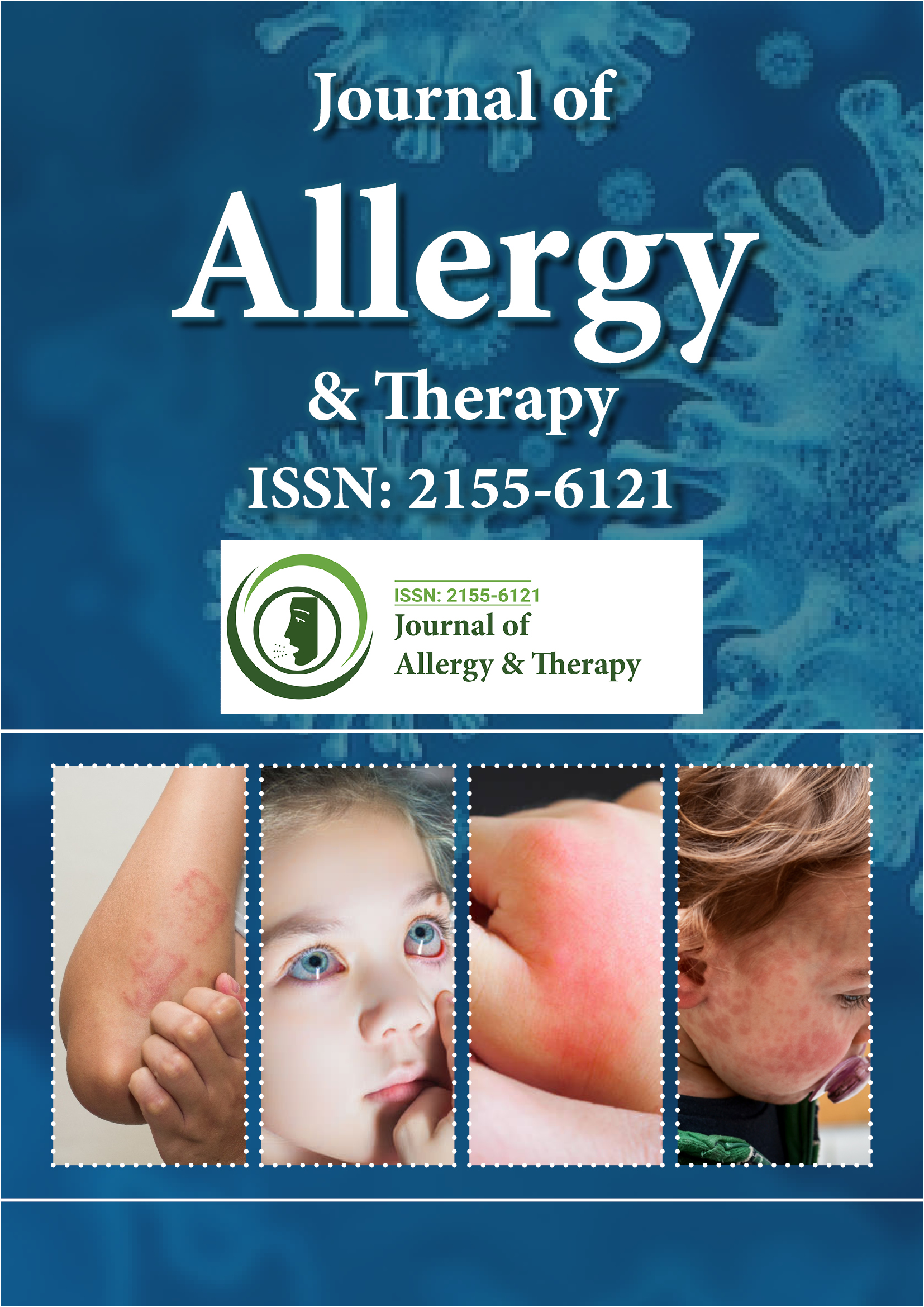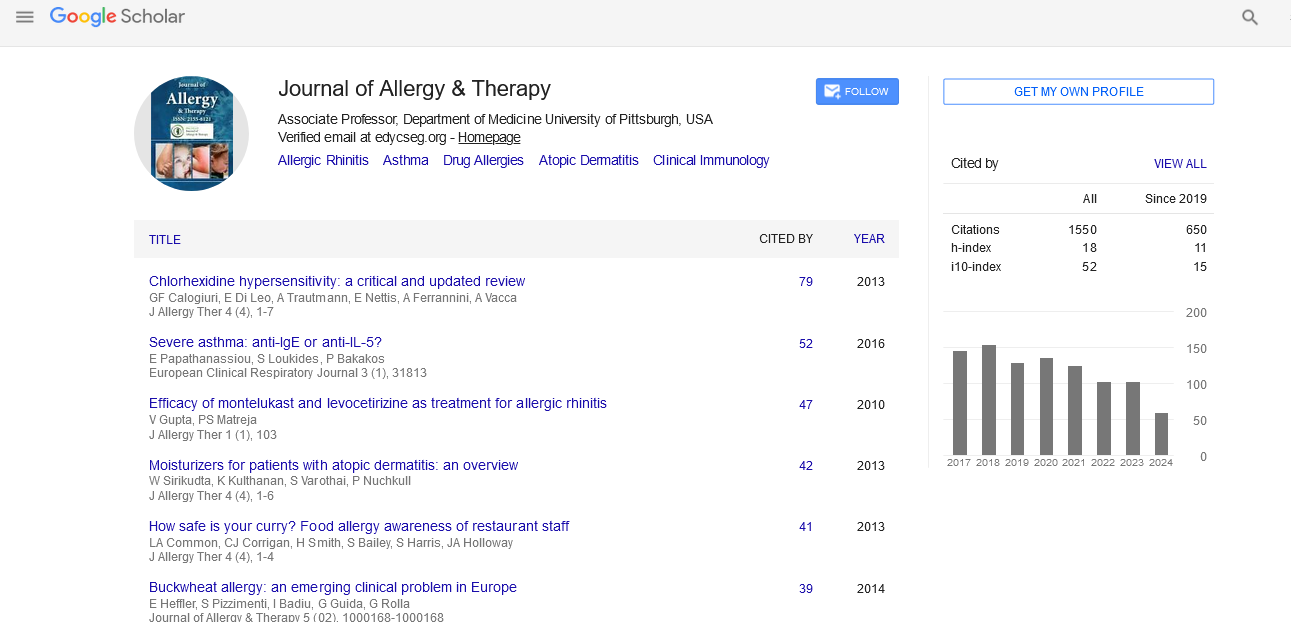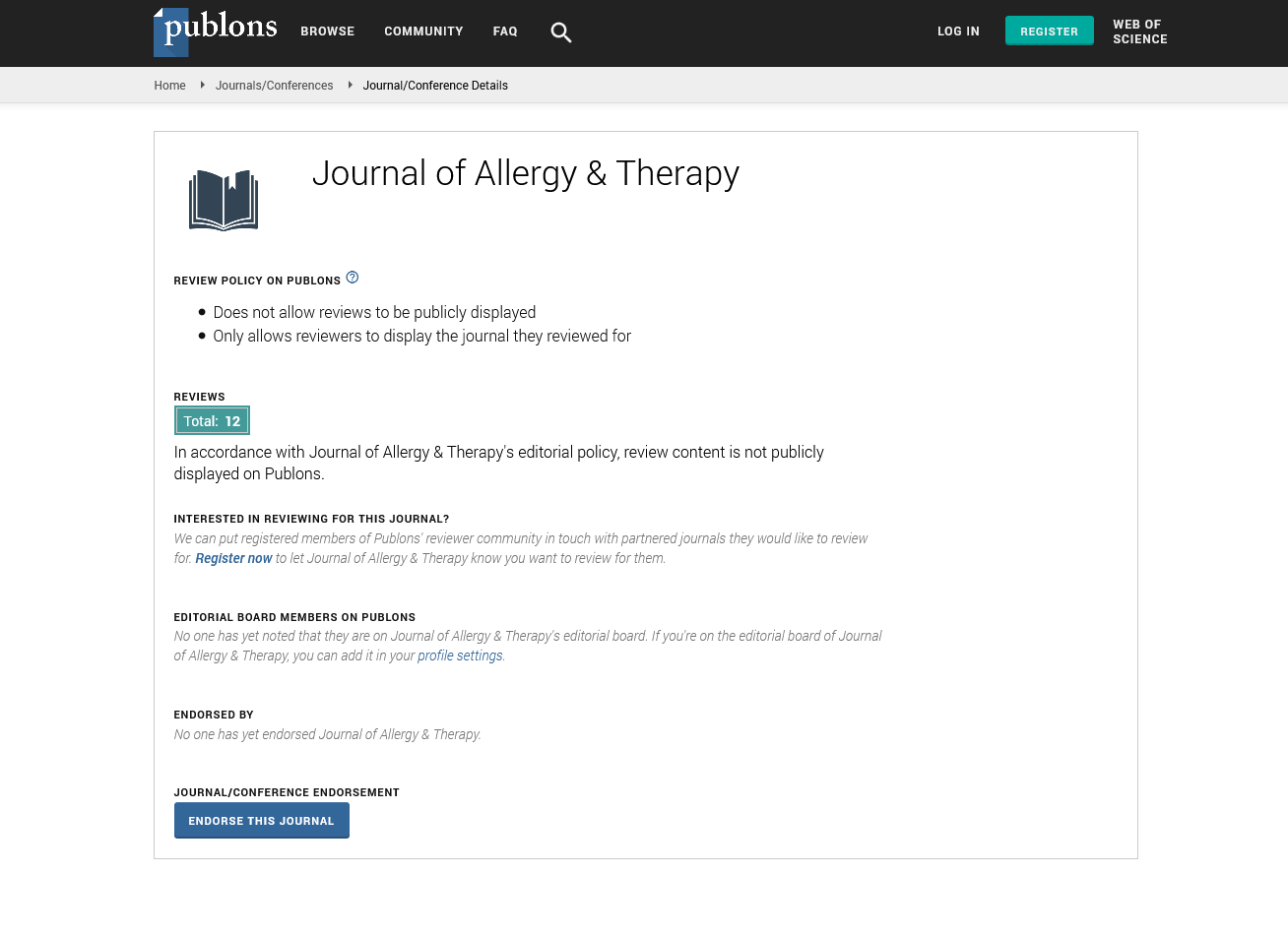PMC/PubMed Indexed Articles
Indexed In
- Academic Journals Database
- Open J Gate
- Genamics JournalSeek
- Academic Keys
- JournalTOCs
- China National Knowledge Infrastructure (CNKI)
- Ulrich's Periodicals Directory
- Electronic Journals Library
- RefSeek
- Hamdard University
- EBSCO A-Z
- OCLC- WorldCat
- SWB online catalog
- Virtual Library of Biology (vifabio)
- Publons
- Geneva Foundation for Medical Education and Research
- Euro Pub
- Google Scholar
Useful Links
Share This Page
Journal Flyer

Open Access Journals
- Agri and Aquaculture
- Biochemistry
- Bioinformatics & Systems Biology
- Business & Management
- Chemistry
- Clinical Sciences
- Engineering
- Food & Nutrition
- General Science
- Genetics & Molecular Biology
- Immunology & Microbiology
- Medical Sciences
- Neuroscience & Psychology
- Nursing & Health Care
- Pharmaceutical Sciences
Griscelli syndrome type 3: Novel mutation, a case report from Saudi Arabia
7th International Conference on Allergy, Asthma and Clinical Immunology
September 14-15, 2016 Amsterdam, Netherlands
Noufa Alonazi
Prince Sultan Military Medical City, KSA
Scientific Tracks Abstracts: J Allergy Ther
Abstract:
Griscelli syndrome (GS) is a rare autosomal recessive disorder, first described by Griscelli in 1978 as partial albinism with cellular immunodeficiency characterized by a silver-gray sheen of the hair and the presence of large clusters of pigment in the hair shaft and the occurrence of either a primary neurological impairment or a severe immunological disorder. Immunodeficiency leads to frequent pyogenic infections and episodes of acute fever, neutropenia and thrombocytopenia, pigmentary dilution of hair, hypogammaglobulinemia and deficient antibody production. Three types of this disorder are distinguished by its genetic cause and pattern of signs and symptoms. GS type 1 is caused by mutation in the MYO5A gene, causing severe primary neurological impairment such as developmental delay and mental retardation, in addition to the distinctive skin and hair coloring. Affected individual may have intellectual disability, seizures and weak muscle tone (hypotonia) eye and vision abnormalities. Patients with GS type 2 caused by mutation in RAB27A gene, associated with a primary immunodeficiency due to an impairment of T cell and natural killer cytotoxic activity which leads to susceptibility to recurrent infections. They also develop an immune condition called hemophagocytic lymphohistiocytosis (HLH), in which the immune system produces too many activated immune cells called T-lymphocytes and macrophages (histiocytes). Over-activity of these cells can damage organs and tissues throughout the body, causing life threatening complications if the condition is untreated. Patients with GS type 2 do not have the neurological abnormalities like type 1. Light skin and hair coloring are the only features of GS type 3. People with this form of the disorder do not have neurological abnormalities or immune system problems. Light microscopy examination of the hair shaft is an easy way to diagnose GS, typically with a large cluster of pigment unevenly distributed in the hair shaft predominantly in the medulla. Electron microscopy of skin biopsy shows massive accumulation of mature Melanosomes within the melanocytes of the skin, contrasting with spare pigment in the adjacent keratinocytes. Prevalence of GS is unknown in Saudi Arabia; type 2 appears to be the most common of the three known types. GS type 1 and 2 are reported in the literature however GS type 3 from Saudi Arabia is rarely reported. Here we are reporting a case of GS type 3 from KSA.
Biography :
Noufa Alonazi is Head of Pediatric Allergy & Clinical Immunology Division at Prince Sultan Military Medical City, Department of Pediatric, Riyadh, Saudi Arabia. She has received Post-Doctoral Fellowship in Pediatric Allergy and Clinical Immunology from Loma Linda University, School of Medicine, California, USA. She also received Diploma in Child Health (D.C.H) from the Royal College of Physician of Ireland and Royal College of Surgeon, Ireland. In addition she has earned Master degree in health system and quality management from the College of Public Health, King Saud University, Riyadh, Saudi Arabia. Also published several article related to Allergy and Clinical Immunology and to the Quality Management.
Email: dralonazi@gmail.com


